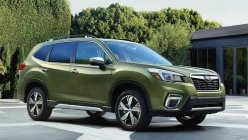Cars break down; it’s simply a fact of life. Whether old or new, a car is only as good as how well its parts work together to keep it moving under the driver’s control. If any of those parts fail, such as the engine, electricals, transmission or suspension, then you’ll be stuck with an expensive doorstop on four wheels.
It’s already annoying enough if it’s just you at the parking lot, for example. But when your car breaks down in the middle of a particularly busy thoroughfare, brace yourself for dagger looks (justified or otherwise) from other motorists as they crawl their way through the resulting traffic jam.
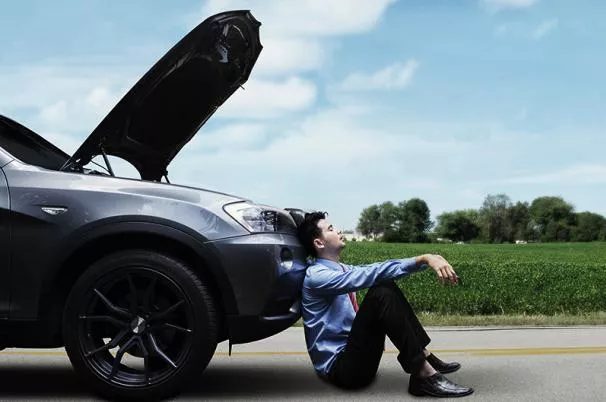
Cars break down; it’s simply a fact of life
Having the car towed sounds like an obvious solution, which is music to the ears of towing companies everywhere. The problem is, a lot of “government-accredited” tow crews don’t seem to have a uniform procedure for properly towing a vehicle; a tow bar attached somewhere in the chassis seems to suffice for them, dragging the car by either the front or rear wheels.
Private firms have a more decent set-up, usually employing a flat-bed truck where the car can be pulled onto and secured for transport; auto clubs and insurance companies offer this service. However, not every car owner pays for club membership or avails of auto insurance. As a result, you’ll come across different ways of towing a vehicle: some use tow bars, others use straps, still others use chains and even rope(!).
But just how should you properly tow a car without aggravating the damage that disabled it in the first place, or even endangering other vehicles on the road? Here are 8 useful tips for you.
1. Use a larger vehicle
Make sure that the vehicle doing the towing is powerful enough. An SUV or a large pickup will typically need to be towed by another vehicle that has at least the same size and engine output. A sedan or a small car will obviously not be enough. Apart from the engine power needed, the transmission needs to be able to deal with the added weight, and the brakes will have to work doubly hard in providing stopping power for two, even if they’re travelling slowly relative to other vehicular traffic.
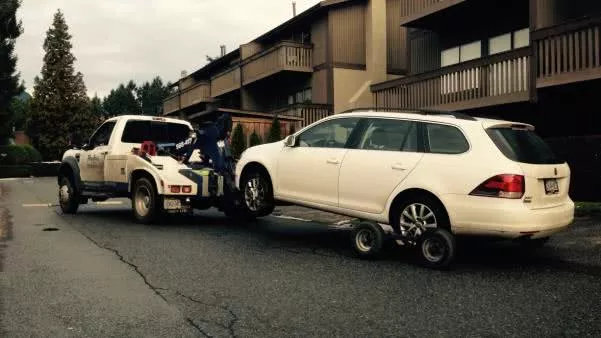
An SUV will typically need to be towed by another vehicle that has at least the same size and engine output
2. Use tow straps if possible
Tow straps come in different sizes, and have different strength ratings. They are better suited for towing than rope or chain since they are designed to better absorb the shock of being jerked around under load.
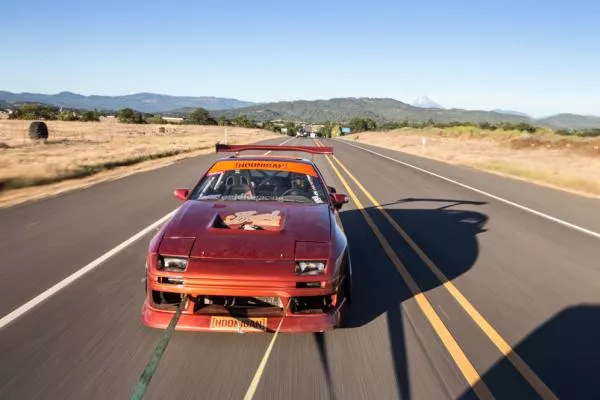
Use tow straps if possible
Whether you’re using a strap, chain or rope however, be sure to maintain a safe distance between the cars, ideally not exceeding 4.5 meters. If the distance is more than 1.5 meters, make sure that the rope, strap or chain is clearly visible to other motorists who might try to squeeze in the space between.
Use a sturdy sign, reflective tape or a brightly-colored piece of cloth, fastened securely and prominently along the tow line.
3. Fasten them properly
Most modern cars come with tow hooks or loops built in for towing purposes; this is where the straps should be attached. If the vehicle to be towed doesn’t have these, the straps should be fastened to the car’s frame.
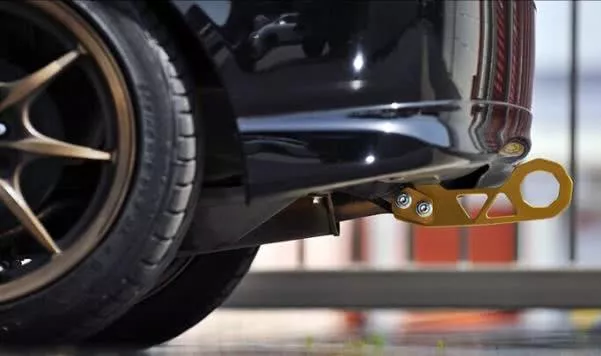
Most modern cars come with tow hooks or loops built in for towing purposes
Similarly, if the towing vehicle doesn’t come equipped with a tow hitch, the straps can be attached directly to the frame, which is in a better position to support the weight of the vehicle being pulled. Connect the tow bar or straps used in towing the other car using a properly-rated hook, link or shackle. Don’t use the bumpers on either vehicle as these are not load-bearing components; these will readily come off from the weight of the pulled car and do more damage to both vehicles.
4. Make it visible
Have a “Vehicle being towed” warning sign displayed prominently at the rear of the vehicle being pulled to notify other drivers who might come up behind your convoy. The sign should be fasten securely so it’s not easily blown away by the wind generated by travel. If the vehicle is being towed in nighttime conditions, its lights should be switched on, or there should be auxiliary lighting attached to the car to make it more visible.
>>> Related posts:
- 8 must-have items for your car emergency kit
- How to survive from different driving incidents on the road
5. Always have company
It never hurts to have at least one more person to help out with preparing a disabled vehicle for towing. That person, preferably with a driver’s license appropriate for the vehicle being towed, should also be placed in control of the other car. He or she will be in charge of signaling to other drivers and operating the brakes where necessary, to aid the towing vehicle in stopping.
6. Take it slow
With everything secure and ready, put the towed vehicle into Neutral while disengaging the handbrake. If the engine is still functioning, start it up; this will enable the power steering, headlights and brakes to be operated on the towed car. Start the lead vehicle, shift into gear from Neutral slowly and without jerking. Turn on the hazard lights for both vehicles and gently roll off. Accelerate gently to take up the slack, then slow down once both vehicles are moving.
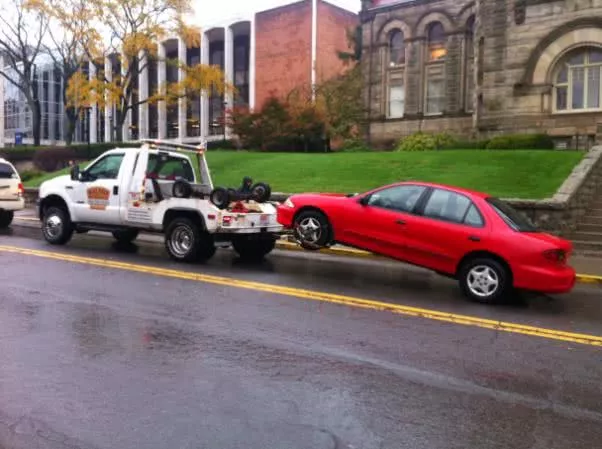
Both drivers manning the vehicles need to coordinate closely during travel
During travel, keep the tow line taut by running under the speed limit. Both drivers manning the vehicles need to coordinate closely, as the driver behind should be able to anticipate traffic lights, signs, turns and similar obstacles. The lead driver can “telegraph” an upcoming stop or slow down by gently applying the brakes to activate the brake lights, serving as a signal to the other driver to engage the other set of brakes to minimize slacks on the tow line.
7. Stay behind the scenes
Travelling at such a slow and measured pace, even with the proper lighting and signages, might still make you a danger for many motorists on the road. For this reason, it is advisable to take backroads or residential streets (if allowed). Don’t attempt to tow the vehicle on wide open roads such as highways and expressways, where there is a greater chance of putting other vehicles at risk if something goes wrong. However, if a vehicle happened to stall on such a thoroughfare, towing it along the shoulder at slow speed until the nearest exit is permitted.
8. Special considerations
If the engine on the towed vehicle cannot be started, then there are certain precautions that need to be taken to avoid doing further damage.
- A manual transmission vehicle with all four wheels on the ground rolling can simply be engaged in Neutral. If the front of the car is to be raised while towing (such as when using a tow dolly), the driveshaft has to be disconnected and removed to avoid damaging the transmission while the rear wheels roll on the ground.
How to tow a car with a tow dolly
- Front-wheel drive cars don’t have an issue with this since the driveline components are packed between the front wheels, which are raised during towing. And since the trailing wheels are not connected to the engine, there’s no added mileage to the odometer.
- Towing an automatic transmission car with all four wheels on the ground is a bit more complicated, especially if the engine is disabled. At the very least, several accessories are needed: a separate lube pump which provides cooling to the transmission in lieu of the engine, a driveshaft coupling device (for rear-wheel drive vehicles) that lets you switch between driving and towing modes from the driver’s seat, and an axle lock (for front-wheel drive vehicles) that safely locks and unlocks the automatic transmission with a simple twist.
- In towing an all-wheel drive vehicle, all four wheels have to be kept off the ground; this is known as flat-bedding. Since each of the wheels normally get power from the engine, they are all tied together, so there’s no real way of pulling any of them along the ground without wearing out the transmission and transaxle. With the engine disabled, there’s no lubrication running, and forcing these parts to move without lubrication can lead to serious mechanical damage. The best option for towing all-wheel drive vehicles would be a flat-bed truck, where the vehicle can be placed on top and secured for safe transport.
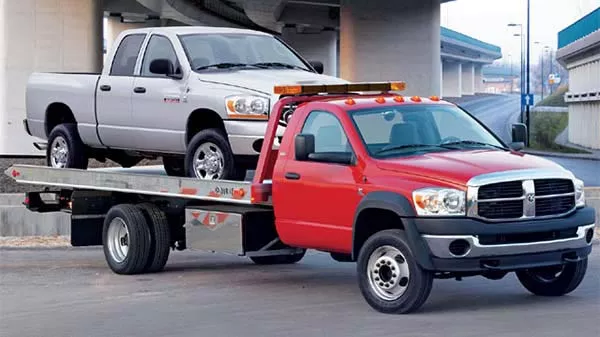
The best option for towing all-wheel drive vehicles would be a flat-bed truck, where the vehicle can be placed on top and secured for safe transport
Of course, it always pays to check your car owner’s manual for additional precautions to be taken that are specific to your type of vehicle. We hope our article has given helpful tips for car owners regarding how to properly tow a car without threatening the safety of other road users or causing more damages to the car.
>>> Click here to get more useful tips and advice in safe driving


